Ultimate Guide of WAV to Mono Converter
Converting WAV files to mono can be essential for various audio applications, from simplifying tracks for analysis to preparing files for specific playback systems. This guide provides expert tips and tricks to help you seamlessly convert your WAV to mono, ensuring optimal audio quality and compatibility. Whether you're a beginner or an experienced audio engineer, our comprehensive guide will equip you with the knowledge and tools needed to achieve the best results. Dive in to explore the ultimate strategies for WAV to mono conversion.
Part 1. Understanding the Basics of Audio Conversion
WAV and Mono Audio Formats
WAV (Waveform Audio File Format): WAV is one of the most popular audio file formats, known for its high quality and uncompressed sound. Developed by Microsoft and IBM, WAV files store audio data in a lossless format, meaning there is no loss of audio quality from compression. This makes WAV files ideal for professional audio editing and archiving. However, their large file size can be a drawback for storage and streaming purposes.
Mono Audio Format: Mono, or monophonic sound, refers to audio that is recorded and played back using a single channel. Unlike stereo audio, which uses two channels to create a sense of spatial distribution, mono audio is centered and does not have directionality. This can be beneficial in scenarios where audio quality and clarity are more important than spatial effects, such as voice recordings, certain types of music, and public address systems.
Benefits of Converting WAV to Mono for Better Sound Quality
Improved Clarity and Focus:
- Enhances clarity and focus, especially for vocal tracks and speech.
- Centers every sound, making it easier for listeners to hear and understand without spatial distractions.
Consistency Across Playback Systems:
- Ensures consistent sound quality across various playback systems, including single-speaker devices like smartphones and public address systems.
- Prevents unbalanced or lost audio details that can occur with stereo recordings on mono systems.
Reduced File Size:
- Decreases file size by halving the amount of data, as only one audio channel is used instead of two.
- Makes files more manageable for storage and sharing without compromising the inherent quality of the WAV format.
Simplified Audio Editing:
- Simplifies the editing process with only one channel to manage.
- Eases tasks like equalization, compression, and noise reduction.
- Especially useful for podcasters, voice-over artists, and audio engineers focusing on speech and single-instrument recordings.
By understanding these basics and benefits, you can make informed decisions about when and how to convert your WAV files to mono, ensuring the best possible audio quality and usability for your specific needs.
Part 2. Converting MP3 to WAV Mono for Improved Audio Quality
Benefits of Converting MP3 to WAV Mono for Clearer Sound
Here are the benefits of converting MP3 to WAV Mono for clear skin:
Enhanced Sound Quality:
- From Lossy to Lossless: MP3 is a lossy format, meaning it compresses audio data, which can degrade sound quality. Converting MP3 to WAV, a lossless format, helps restore and preserve audio quality.
- Reduction of Compression Artifacts: MP3 files can have compression artifacts that distort sound. Converting to WAV can help mitigate these artifacts, resulting in clearer and more natural audio.
Improved Clarity and Focus:
- Centralized Audio: Converting to mono centralizes the audio, which can enhance clarity, especially for speech and vocals, making it easier to understand.
- Elimination of Stereo Imbalances: Stereo recordings can have imbalances where one channel might overpower the other. Converting to mono ensures consistent audio levels across all playback devices.
Better Editing Flexibility:
- Lossless Editing: Editing in a lossless format like WAV preserves audio quality better than editing in MP3, which can lose quality with each edit.
- Simplified Workflow: With mono audio, there is only one channel to work with, simplifying tasks like equalization, compression, and noise reduction, and making the editing process more straightforward and efficient.
Optimized for Single-Speaker Devices:
- Consistent Playback Quality: Mono audio is more suited for playback on single-speaker devices, such as smartphones and certain public address systems, ensuring consistent and clear sound.
- Uniform Listening Experience: Users experience uniform audio quality regardless of the playback device, avoiding issues with stereo recordings that may not translate well on mono systems.
Part 3. Converting WAV Stereo to Mono for Consistent Sound
Importance of Converting WAV Stereo to Mono for Uniform Sound Output
Consistent Sound Quality:
- Ensures uniform audio across different playback devices.
- Eliminates phase issues and spatial inconsistencies.
Enhanced Clarity:
- Centralizes sound for clearer speech and vocals.
- Removes spatial distractions, improving focus on content.
Simplified Editing:
- Easier to manage and apply effects with a single channel.
- Streamlines equalization, compression, and noise reduction.
Professional Compatibility:
- Preferred in broadcasting and public address systems.
- Adheres to industry standards for certain applications.
Efficient Storage:
- Reduces file size for easier storage and transmission.
- Maintains quality while making files more manageable.
Part 4. The Best WAV to Mono Converter
HitPaw Univd (HitPaw Video Converter) is a comprehensive and versatile software solution designed to meet all your video and audio conversion needs. Known for its user-friendly interface and powerful features, HitPaw Univd stands out as a one-stop video processing tool that caters to both beginners and professionals.
Features
- Convert Photo/Video Formats: Supports a wide range of formats, ensuring compatibility with various devices and platforms.
- Download Videos from 10,000+ Sites: Easily download videos from popular sites like YouTube, Vimeo, and more.
- Download Music from Famous Platforms: Extract and download music from major platforms such as Spotify, SoundCloud, and others.
- Edit Videos: Offers a robust set of editing tools to trim, crop, merge, and add effects to videos.
- Image Compressor: Efficiently reduces the size of images without compromising quality.
- Screen Recording: Captures high-quality screen recordings for tutorials, gameplay, and more.
- 2D to 3D Conversion: Converts 2D videos to 3D, enhancing the viewing experience.
Steps
Here are the steps to convert videos using HitPaw Univd:
Step 1. Import file:
Launch HitPaw Univd and click on "Add Files" to import WAV files into the program.
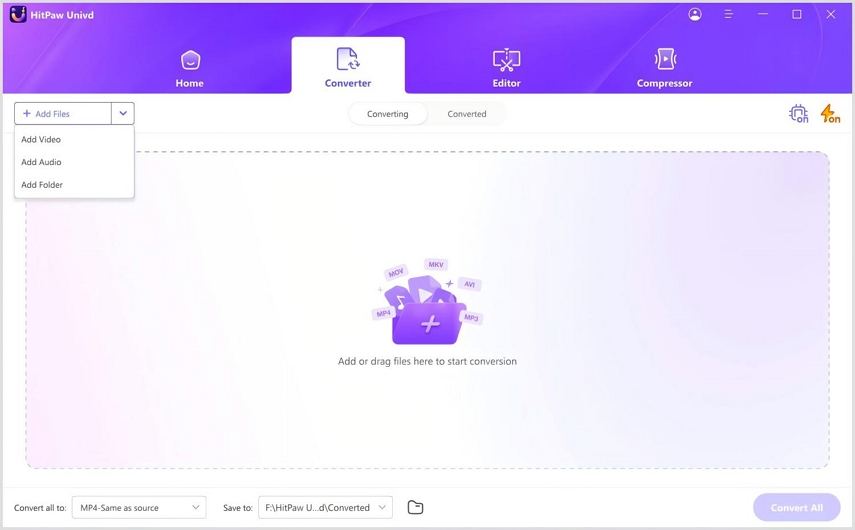
Step 2. Select an Output Format:
Choose ‘MP3’ or another desired format from the format dropdown menu.
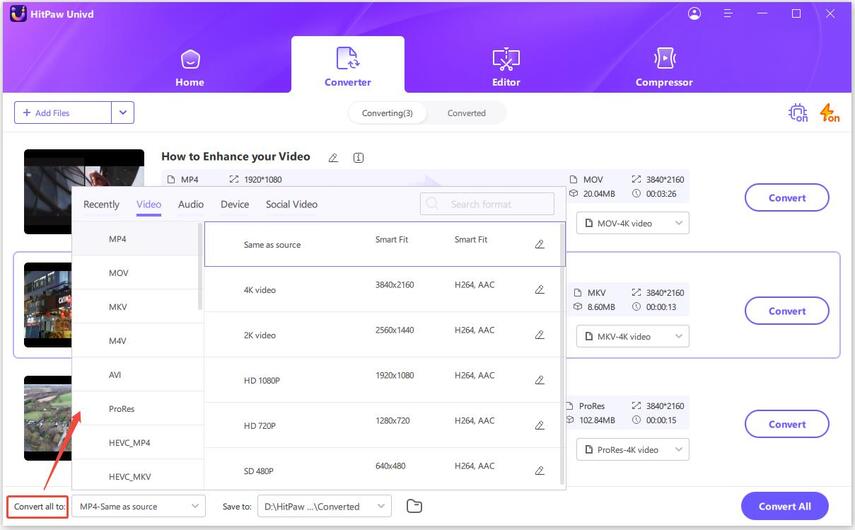
Step 3. Convert to Mono:
Access the settings (gear icon) and select the "Mono" option under audio settings.
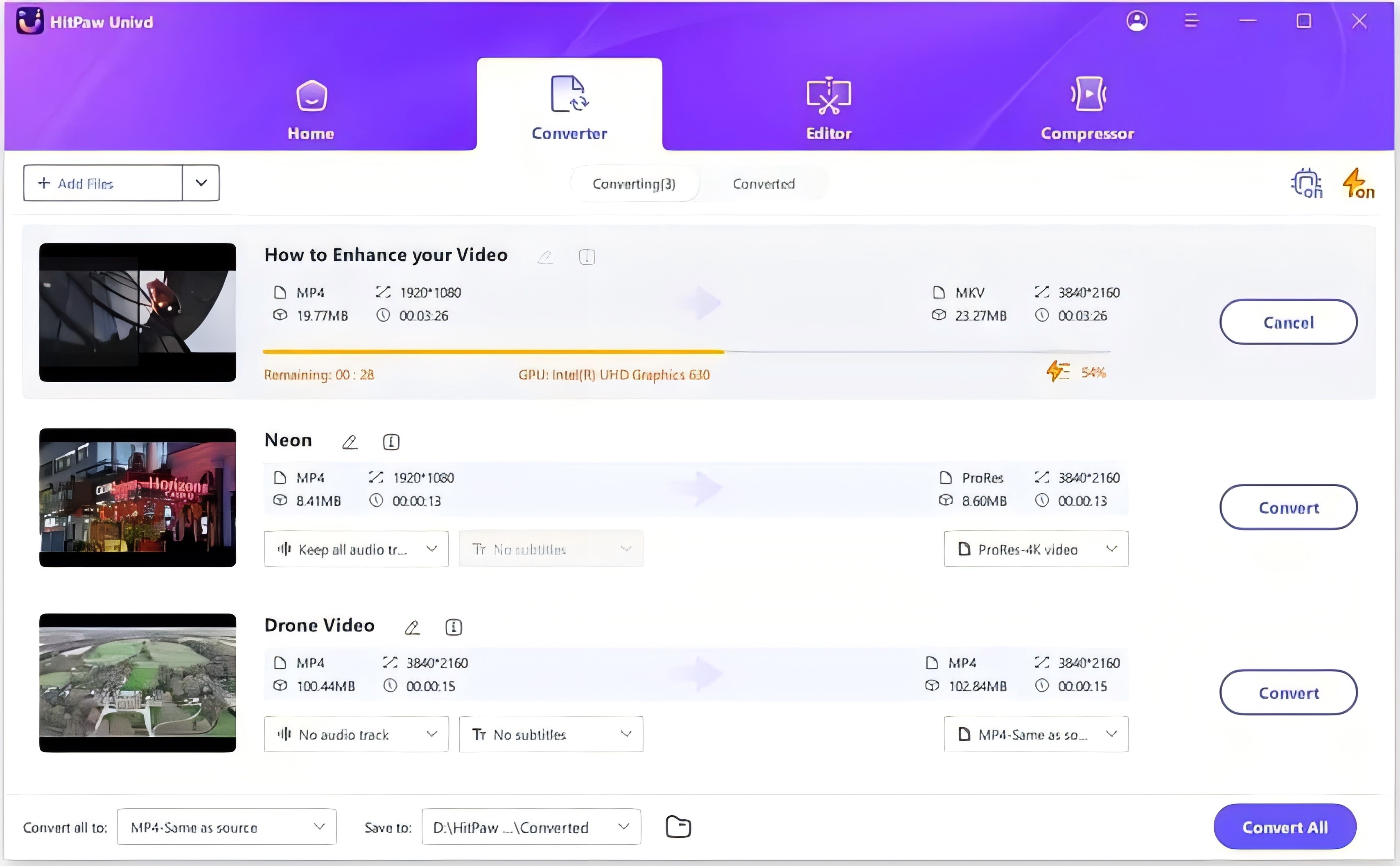
Step 4. Access the Converted Files:
Once the conversion is complete, you can access the converted videos by clicking on "Open Folder" or navigating to the output directory specified.
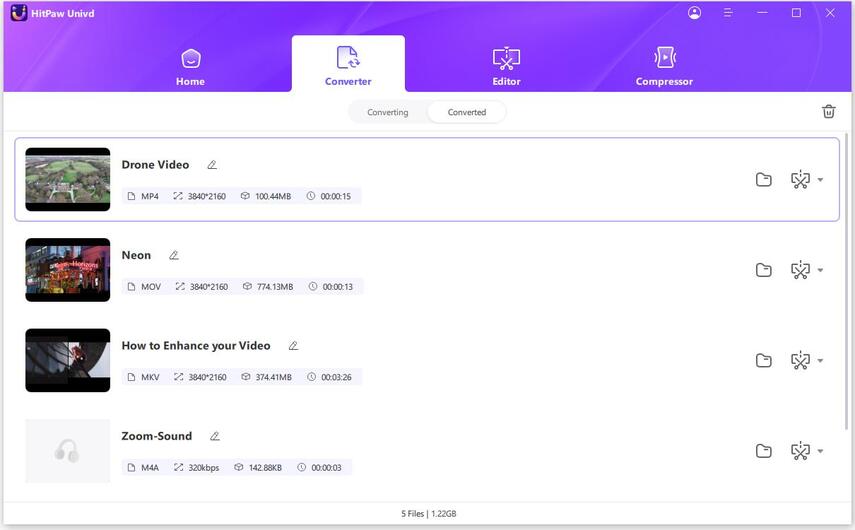
Watch the following video to learn more details:
Part 5: FAQs of WAV to Mono
Q1. How do I convert a WAV file to mono?
A1. To convert a WAV file to mono, you can use software like HitPaw Univd. Simply add the WAV file, select the mono option in the audio settings, and start the conversion process.
Q2. What is the difference between stereo and mono audio?
A2. Stereo audio uses two channels to create a sense of space and directionality in the sound, while mono audio uses a single channel, providing a more centralized and focused sound.
Q2. Can I convert WAV stereo to mono without specialized software?
A2. While some media players may have basic conversion features, using dedicated software like Audacity or HitPaw Video Converter offers more control and quality assurance when converting WAV stereo to mono.
Bottom Line
Converting WAV to mono can enhance audio clarity, consistency, and manageability. HitPaw Univd offers a powerful, user-friendly solution for this and many other tasks. Its extensive features make it a one-stop tool for all your audio and video processing needs. Try out HitPaw Univd today to experience seamless and efficient audio conversion.






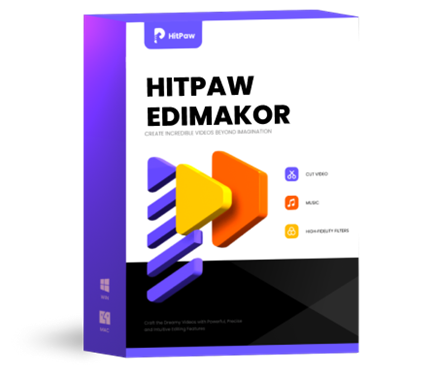 HitPaw Edimakor
HitPaw Edimakor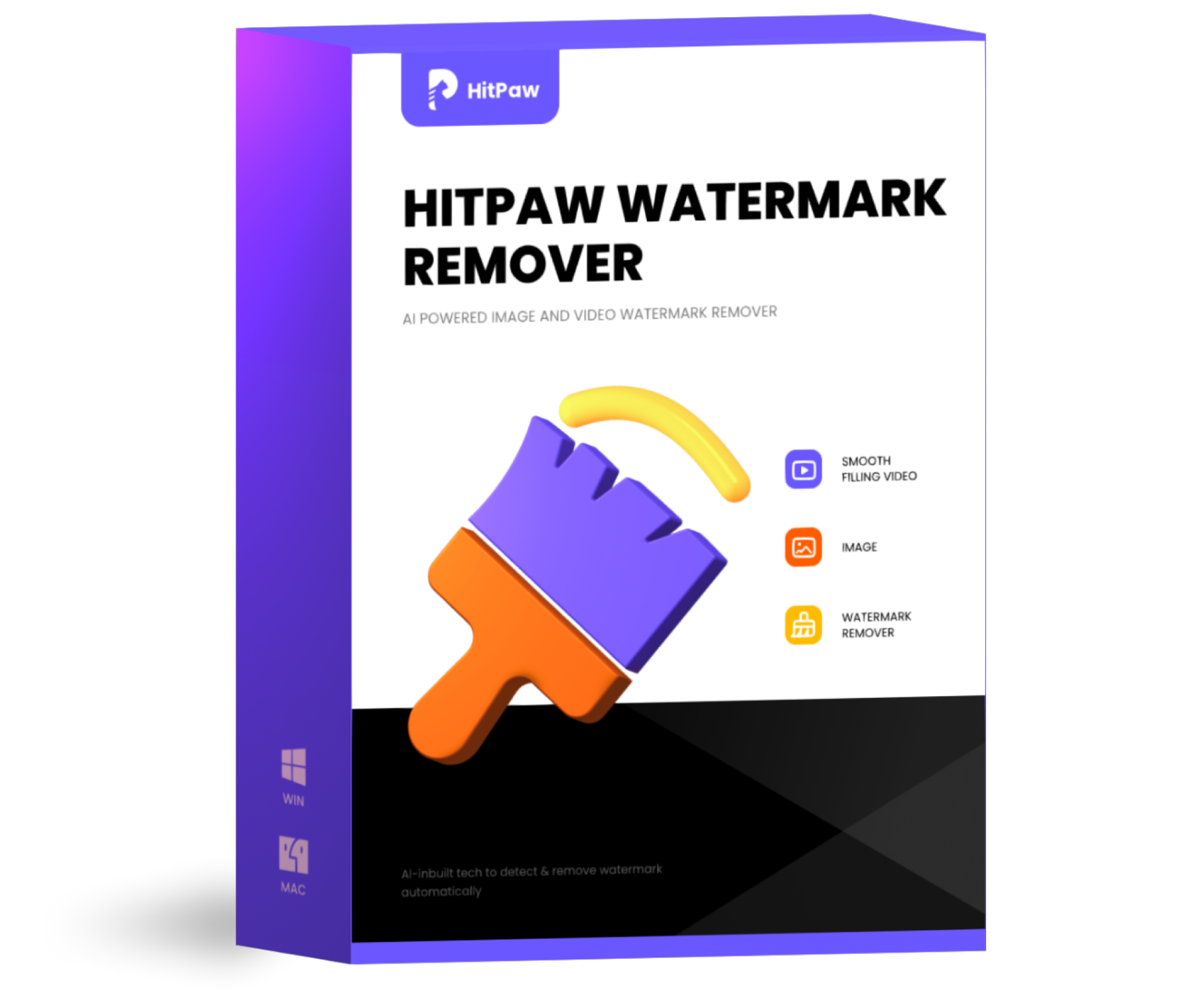 HitPaw Watermark Remover
HitPaw Watermark Remover  HitPaw VikPea (Video Enhancer)
HitPaw VikPea (Video Enhancer)
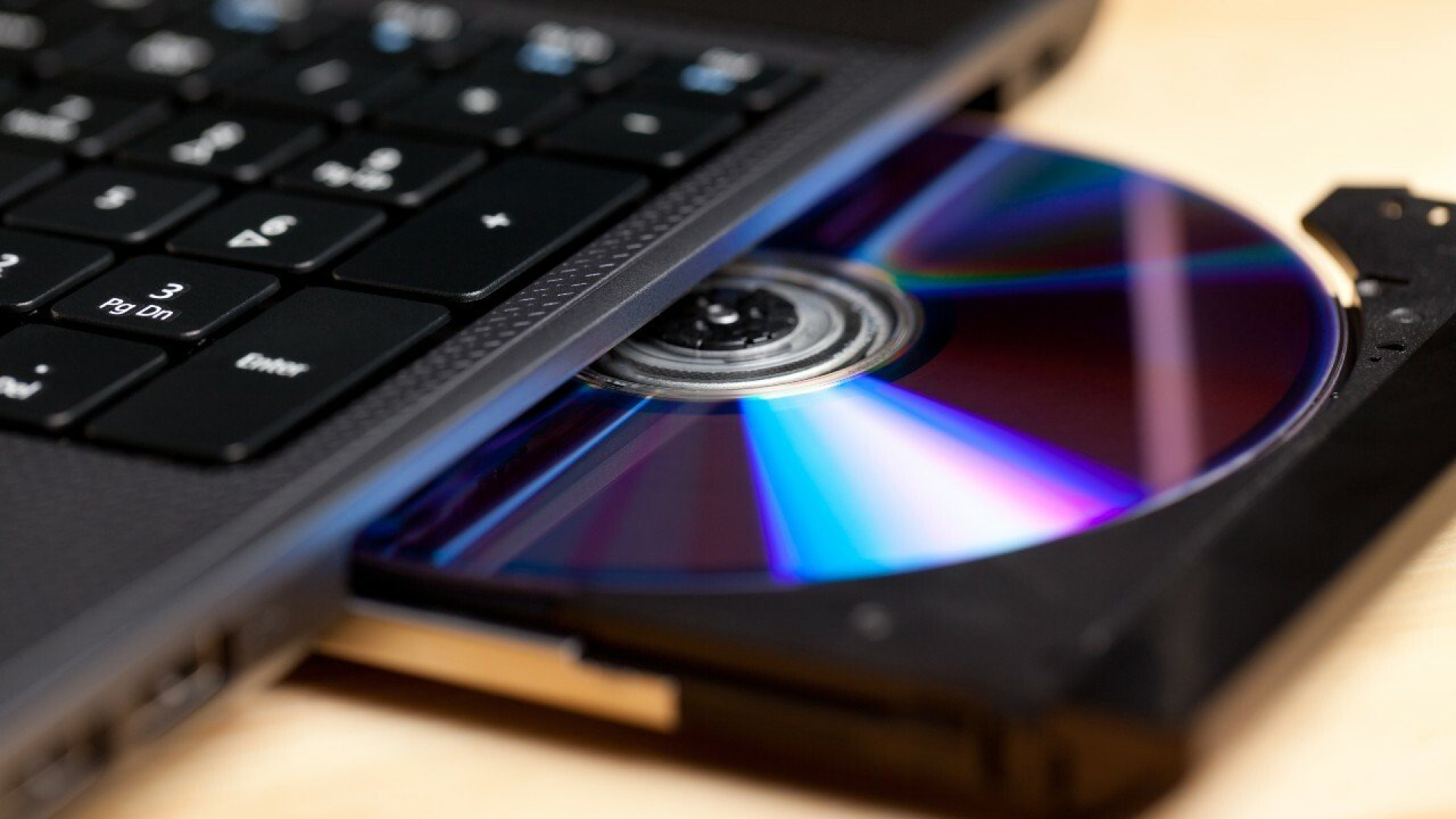


Share this article:
Select the product rating:
Daniel Walker
Editor-in-Chief
My passion lies in bridging the gap between cutting-edge technology and everyday creativity. With years of hands-on experience, I create content that not only informs but inspires our audience to embrace digital tools confidently.
View all ArticlesLeave a Comment
Create your review for HitPaw articles